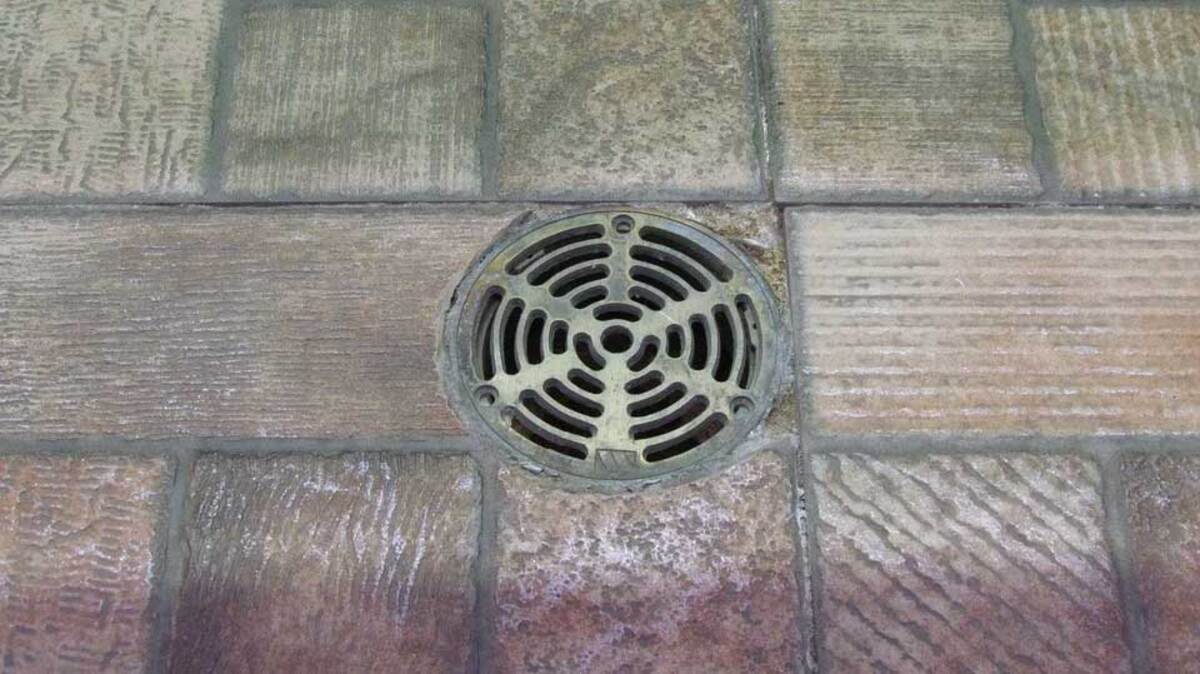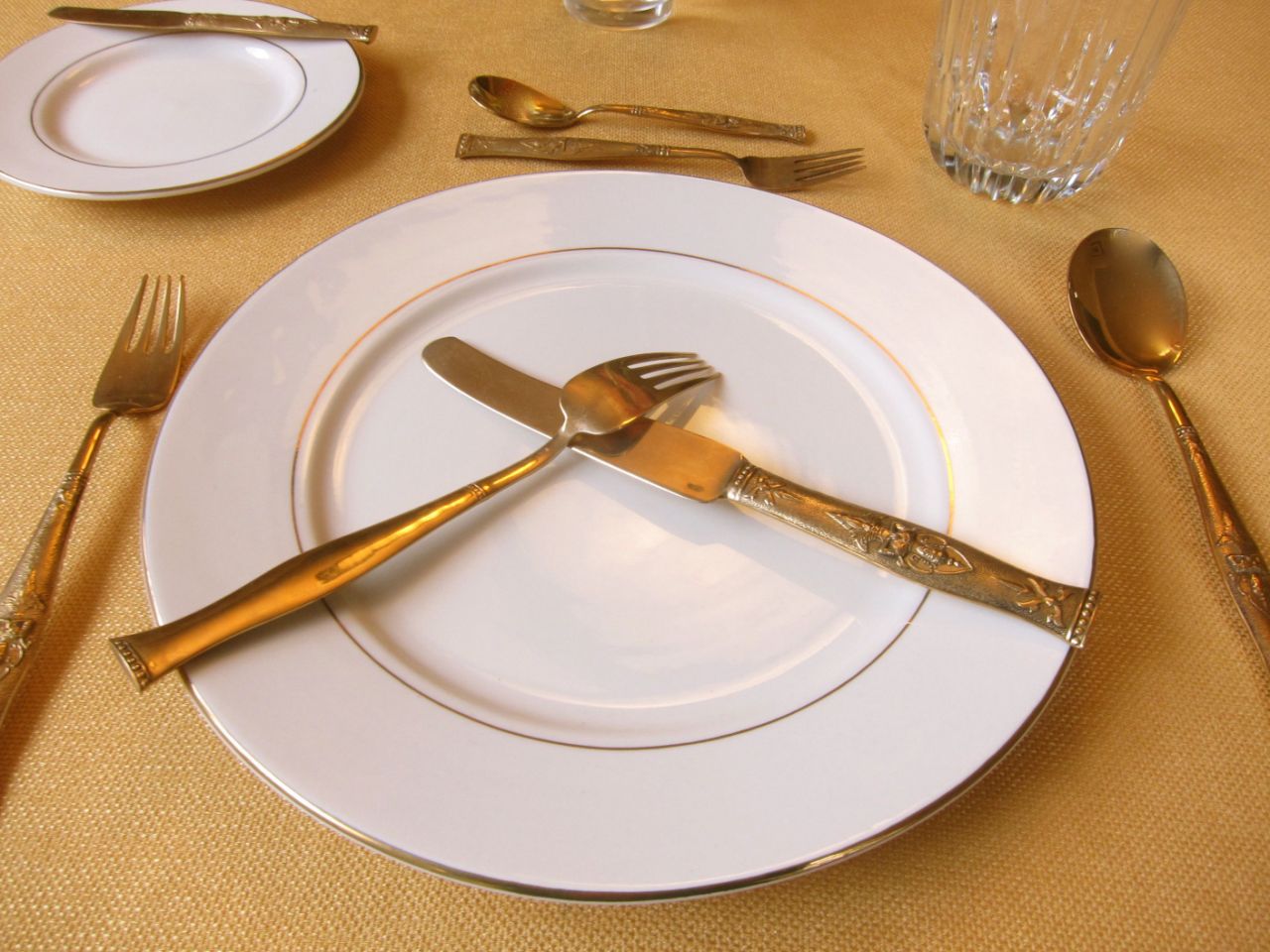Home>Dining>Events & Etiquette>Why American Table Manners Are Going Down The Drain By Brie Dyas


Events & Etiquette
Why American Table Manners Are Going Down The Drain By Brie Dyas
Modified: January 9, 2024
Discover why American table manners are deteriorating as Brie Dyas explores the effects of modern event and etiquette trends. From casual dining to formal occasions, learn how societal changes impact our manners.
(Many of the links in this article redirect to a specific reviewed product. Your purchase of these products through affiliate links helps to generate commission for Storables.com, at no extra cost. Learn more)
Introduction
Table manners play a significant role in our daily lives, helping us navigate social interactions and create positive impressions. However, in recent years, there has been a noticeable decline in American table manners, leading to concerns about the erosion of social etiquette. From the lack of basic manners to the overlooking of dining etiquette, there are various factors contributing to this trend.
In this article, we will explore why American table manners are seemingly going down the drain and examine the impact of changing social norms, technology, and parenting on dining etiquette. Additionally, we will discuss the consequences of this decline and the importance of reestablishing proper table manners in our society.
Key Takeaways:
- Embracing and prioritizing proper table manners, both at home and in public, can enhance social interactions, foster respect, and create a more harmonious dining culture for individuals and future generations.
- The decline of American table manners can be addressed by reintroducing etiquette education in schools, encouraging parents to teach basic manners, and promoting a balanced approach that acknowledges changing social norms while upholding the values of respect and consideration.
Read more: Why Table Manners Are Important
Lack of Basic Table Manners
One of the primary reasons behind the decline of American table manners is the lack of basic etiquette skills. Many individuals, especially the younger generation, seem to have forgotten or never learned the fundamental rules of dining etiquette.
Simple acts such as chewing with your mouth closed, using utensils properly, and refraining from talking with food in your mouth are basic table manners that should be ingrained in our behavior. However, these common practices are often disregarded or completely overlooked in today’s fast-paced society.
With the rise of casual dining and the culture of eating on-the-go, many people prioritize convenience over proper manners. As a result, dining behavior that was once considered essential and respectful is now brushed aside in favor of quick and informal eating habits.
Furthermore, the lack of emphasis on teaching table manners in schools and homes contributes to this decline. In the past, children were often taught proper dining etiquette as part of their upbringing. However, with busy schedules and a focus on academics or other activities, the importance of teaching these manners has been overlooked.
It is crucial to understand that basic table manners go beyond polite gestures; they are a reflection of one’s respect for others and the appreciation of shared meals. Lack of consideration for proper dining etiquette can lead to discomfort and negative perceptions among dining companions, impacting social interactions and relationships.
In order to address the lack of basic table manners, it is essential to reintroduce etiquette education in schools and encourage parents to prioritize teaching these skills at home. By instilling these behaviors from a young age, we can help cultivate a culture of respect and thoughtfulness around the dining table.
Overlooking Dining Etiquette
In addition to the lack of basic table manners, another contributing factor to the decline of American table etiquette is the overlooking of dining etiquette. Dining etiquette encompasses a range of behaviors and practices that are essential to creating a pleasant and respectful dining experience.
One common oversight in dining etiquette is the improper use of utensils. Many individuals may struggle with knowing which utensil to use for each course or how to properly hold them. This lack of knowledge can lead to awkward and clumsy dining experiences, detracting from the overall enjoyment of the meal.
Furthermore, the practice of using mobile devices at the table, such as smartphones and tablets, has become increasingly common. This not only distracts diners from engaging in meaningful conversations but also demonstrates a lack of respect for the people present. Constantly checking messages, scrolling through social media, or taking calls during a meal sends a message that the person’s attention is elsewhere, rather than fully present in the dining experience.
Another overlooked aspect of dining etiquette is the proper handling of dining implements, such as napkins and glassware. Folding the napkin neatly on your lap, using it to wipe your mouth discreetly, and avoiding gestures like blowing your nose in it are expected behaviors. Similarly, understanding the correct way to hold and use glassware can enhance the dining experience and show consideration for others at the table.
By simply being mindful of these dining etiquette practices, we can create a more sophisticated and enjoyable dining atmosphere. It is about recognizing the importance of respect, consideration, and grace when sharing a meal with others.
To address the overlooking of dining etiquette, it is vital for individuals to educate themselves on proper dining practices. Resources such as books, articles, and online tutorials can provide guidance and serve as a refresher on etiquette rules. Additionally, etiquette classes and workshops offer opportunities to learn and practice dining etiquette in a structured setting.
By becoming more mindful of dining etiquette and making a conscious effort to practice proper behavior, we can elevate our dining experiences and foster a greater sense of connection and respect among diners.
Decline of Formal Dining
One prominent aspect contributing to the erosion of American table manners is the decline of formal dining. In the past, formal dining occasions were more prevalent and served as opportunities to showcase proper etiquette and social graces. However, in modern times, the shift towards casual dining has eroded the importance placed on formal dining etiquette.
Formal dining events, such as black-tie dinners or elegant receptions, provided a setting in which individuals were expected to adhere to a set of refined rules and practices. These events required guests to display their knowledge of table manners, including the correct use of utensils, proper placement of napkins, and understanding of formal dining protocols.
However, with the rise of casual dining and a more relaxed approach to social gatherings, formal dining occasions have become less frequent. This shift has resulted in a decline in the emphasis placed on formal dining etiquette, as many people are no longer exposed to or required to practice these refined manners on a regular basis.
Additionally, formal dining etiquette can be perceived as intimidating or outdated by some, leading individuals to shy away from learning and practicing it. The pressure to adhere to a strict set of rules and the fear of committing a dining faux pas can make formal dining feel inaccessible or overly restrictive for many.
While the decline of formal dining may be a reflection of evolving social norms and a desire for more relaxed social gatherings, it is important not to dismiss the value of formal dining etiquette altogether. The skills and knowledge gained from practicing formal dining etiquette can be transferred to various social and professional settings, allowing individuals to navigate diverse dining situations with confidence and grace.
Therefore, it is crucial to recognize the importance of maintaining an understanding of formal dining etiquette, even in a more casual dining landscape. By incorporating elements of formal dining etiquette into our everyday meals and gatherings, we can foster a greater sense of refinement and respect for the dining experience.
Influence of Casual Dining Culture
The rise of casual dining culture has had a significant influence on the decline of American table manners. In recent years, there has been a shift towards more relaxed and informal dining experiences, both in restaurants and at home. This shift has led to a decrease in the emphasis placed on traditional table manners and a more relaxed approach to dining etiquette.
Casual dining establishments, such as fast food chains, food trucks, and casual family-style restaurants, have become increasingly popular. These establishments often prioritize speed and convenience over formalities and etiquette. Customers are encouraged to eat quickly, with a focus on efficiency rather than savoring the dining experience.
Furthermore, the rise of takeout and delivery services has further eroded the practice of proper table manners. Many people now consume meals in the comfort of their own homes or on-the-go, where the formalities of traditional table manners may be overlooked.
The casual dining culture also promotes a more relaxed dress code and a casual atmosphere, which may contribute to a lack of consideration for proper dining etiquette. When diners feel comfortable and at ease, they may be more inclined to overlook or dismiss the importance of adhering to traditional table manners.
It is important to note that casual dining culture does not necessarily imply a complete disregard for table manners. However, the emphasis on convenience, speed, and informality can lead to a decline in the practice of proper etiquette.
To address the influence of casual dining culture on table manners, it is essential to promote a balanced approach. Encouraging individuals to take the time to enjoy their meals, even in casual dining settings, can help foster a greater appreciation for the dining experience and instill a sense of respect for traditional table manners.
Additionally, incorporating elements of formal dining etiquette, such as using utensils properly, chewing with your mouth closed, and engaging in polite conversation, can enhance the dining experience in any setting. By adopting a mindful and considerate approach to dining, we can uphold the value of table manners while still enjoying the benefits of casual dining culture.
When dining in America, remember to place your napkin on your lap, chew with your mouth closed, and wait for everyone to be served before starting to eat. Good table manners show respect for others.
Changing Social Norms
Another significant factor contributing to the decline of American table manners is the shift in social norms. As society evolves, so do its expectations and standards, including those related to dining etiquette.
In the past, there was a greater emphasis on formality and adherence to traditional etiquette rules. Dining occasions were seen as opportunities to demonstrate social status and refinement, with strict guidelines to follow. However, in recent years, there has been a move towards a more relaxed and informal approach to social interactions, including dining.
With the rise of casual lifestyles and a focus on individuality and personal expression, many traditional etiquette rules and formalities have become less important or even obsolete. The emphasis is now on authenticity, comfort, and informality, rather than rigid adherence to established norms.
Social media and technology have also played a significant role in shaping changing social norms around dining etiquette. The constant sharing of food photos, live streaming of meals, and the desire to capture the perfect Instagram-worthy shot have shifted the focus from the actual act of eating to the performance and presentation of the meal.
As a result, people may prioritize capturing the perfect photo or checking their social media accounts during a meal, leading to a lack of engagement and consideration for proper table manners.
Moreover, the trend of multitasking and being constantly connected has made it more acceptable to engage in other activities while dining. This includes checking emails, scrolling through social media feeds, or watching videos, which can detract from the social aspect of dining and the need for proper table manners.
To address the impact of changing social norms on table manners, it is essential to strike a balance between embracing new social trends and maintaining the fundamentals of respect and consideration for others. While it is important to adapt to societal changes, it is equally important to preserve the values and traditions that promote positive social interactions during mealtime.
By being aware of the influence of changing social norms and consciously choosing to prioritize respectful behavior and good table manners, we can contribute to creating a more harmonious and enjoyable dining experience for ourselves and those around us.
Impact of Technology
Technology has had a profound impact on various aspects of our lives, including the way we dine and the decline of table manners. The constant presence of smartphones, tablets, and other devices has changed the dynamics of dining experiences and influenced our behavior at the table.
One of the major impacts of technology on table manners is the distraction it creates. The temptation to constantly check notifications, scroll through social media feeds, or respond to messages can divert our attention from the people we are dining with and the shared experience of the meal.
When our focus is on our devices rather than on the conversation and interactions at the table, we may unintentionally display poor table manners, such as talking with food in our mouth, not actively participating in conversations, or neglecting proper dining etiquette.
Furthermore, technology has reshaped our expectations of dining experiences. With the proliferation of food delivery services and online reviews, individuals can easily order meals from the comfort of their homes and have food delivered to their doorstep. This convenience has reduced the need for individuals to venture out to restaurants and engage in formal dining experiences, where proper table manners are expected.
Moreover, the influence of technology extends to the social media realm, where the practice of “foodstagramming” or sharing photos of meals has become commonplace. While capturing and sharing food photos can be a fun and creative activity, it can also distract individuals from focusing on the dining experience and proper table manners.
To mitigate the impact of technology on table manners, it is essential to set boundaries and establish guidelines for device usage at the table. Designated “device-free” zones or specific times for individuals to disconnect from technology during mealtime can help foster a more thoughtful and engaged dining atmosphere.
Additionally, promoting digital etiquette and mindfulness around using technology can encourage individuals to be more conscious of their behavior at the table. This includes limiting the use of devices to necessary communication, being present in the moment, and practicing good manners when sharing food-related content online.
By striking a balance between embracing technology and prioritizing meaningful interactions and proper table manners, we can ensure that technology enhances rather than detracts from the dining experience.
Parenting and Education
Parenting and education play a crucial role in shaping the table manners of future generations. The decline in American table manners can be partially attributed to the lack of emphasis on teaching and reinforcing proper etiquette at home and in schools.
Parents have a significant influence on their children’s behavior and the values they learn. Teaching children basic table manners from a young age sets a foundation for respectful and considerate dining behavior. Unfortunately, in today’s fast-paced world, busy schedules and a focus on other priorities may result in parents neglecting to teach these important skills.
Furthermore, as families rely more on convenience foods and eating on-the-go, the opportunity for parents to sit down with their children for a shared meal and pass on dining etiquette lessons becomes increasingly rare.
In schools, the curriculum often prioritizes academic subjects, leaving little room for formal instruction on table manners and dining etiquette. Subjects such as home economics and etiquette classes, once common in the curriculum, have become less prevalent, contributing to a gap in etiquette education.
To address the decline in table manners, it is essential for parents and educators to prioritize teaching these skills. Parents can create opportunities for shared meals, where they can lead by example and reinforce proper dining behavior. They can also actively instruct their children on basic table manners, such as using utensils correctly, waiting their turn to speak, and showing respect to fellow diners.
Similarly, schools can integrate lessons on dining etiquette into their curriculum, teaching students the importance of proper table manners and providing practical guidance on various dining situations. Etiquette workshops or guest speakers can also be invited to schools to enhance students’ understanding and confidence in practicing good table manners.
By recognizing the significance of parenting and education in shaping table manners, we can empower future generations with the necessary skills to navigate social dining situations with grace and respect.
Conclusion
The decline of American table manners is a concern that stems from various factors, including the lack of basic manners, the overlooking of dining etiquette, the decline of formal dining, the influence of casual dining culture, changing social norms, the impact of technology, and deficiencies in parenting and education.
While the shift towards more casual and relaxed dining experiences is reflective of evolving social norms and lifestyles, it is important not to disregard the value of proper table manners. Table manners are not merely about following a set of rules; they are a reflection of respect, consideration, and social grace.
To address the decline in table manners, it is vital to reintroduce and reinforce the teaching of basic etiquette skills, both at home and in schools. Parents should prioritize teaching their children proper table manners from a young age, and schools should incorporate dining etiquette education into their curriculum.
Additionally, individuals can make a conscious effort to be more mindful of their dining behavior and practice proper table manners, regardless of the dining setting. This includes showing respect for others at the table, using utensils correctly, chewing with mouths closed, avoiding distractions from technology, and engaging in meaningful conversations.
By promoting a balanced approach that acknowledges the changing social landscape while upholding the values of respect and consideration, we can work towards reestablishing and preserving proper table manners in our society.
Ultimately, the importance of table manners goes beyond etiquette itself; it fosters a sense of connection, respect, and appreciation for the shared experience of dining. By prioritizing and practicing good table manners, we can enhance our dining experiences, improve social interactions, and create a more harmonious and respectful dining culture for ourselves and future generations.
Frequently Asked Questions about Why American Table Manners Are Going Down The Drain By Brie Dyas
Was this page helpful?
At Storables.com, we guarantee accurate and reliable information. Our content, validated by Expert Board Contributors, is crafted following stringent Editorial Policies. We're committed to providing you with well-researched, expert-backed insights for all your informational needs.















0 thoughts on “Why American Table Manners Are Going Down The Drain By Brie Dyas”